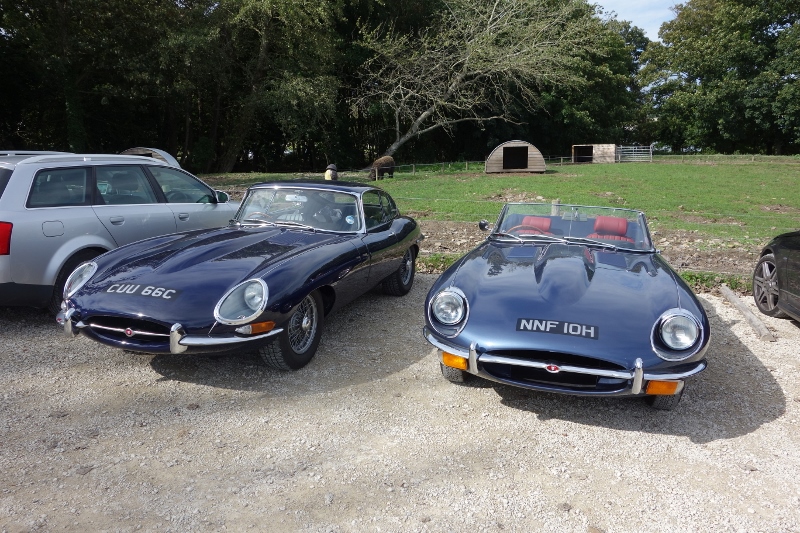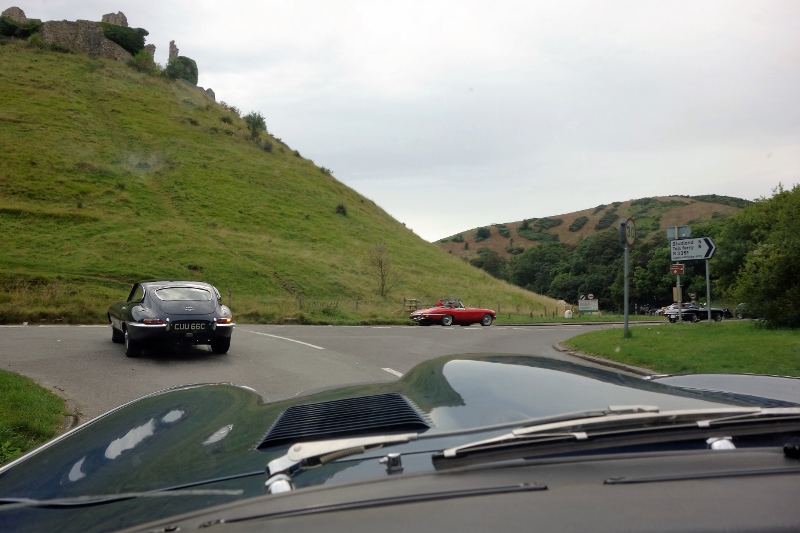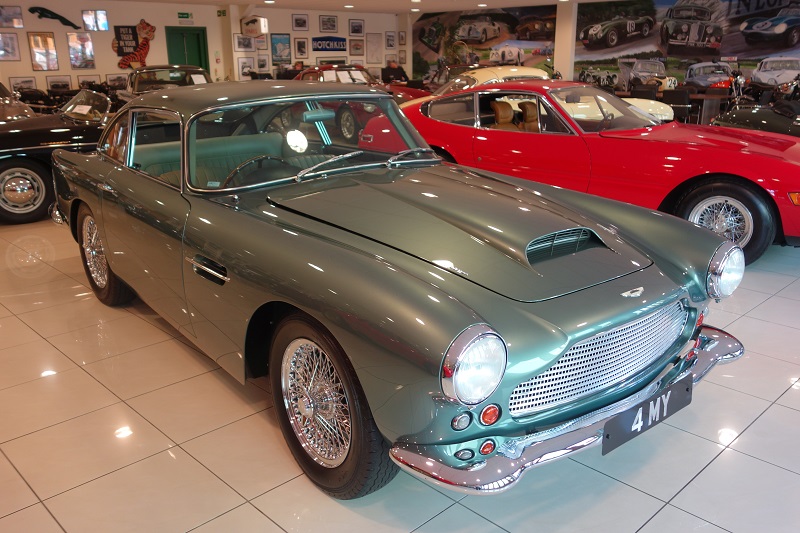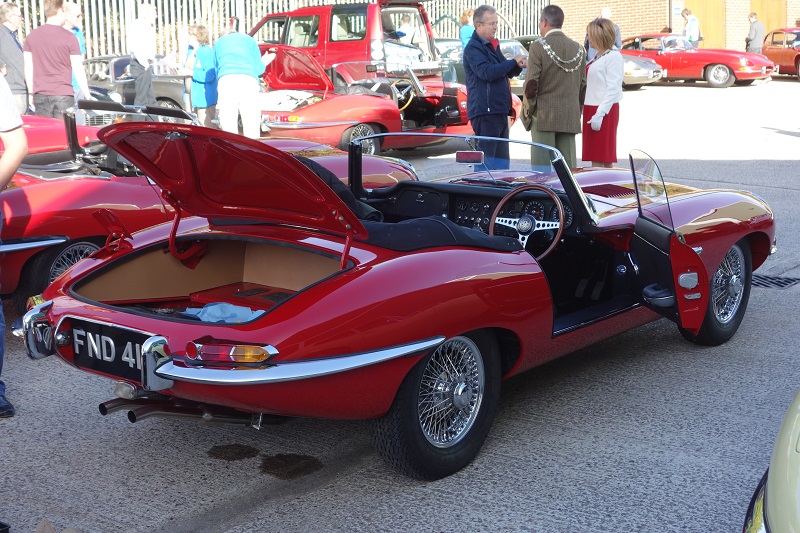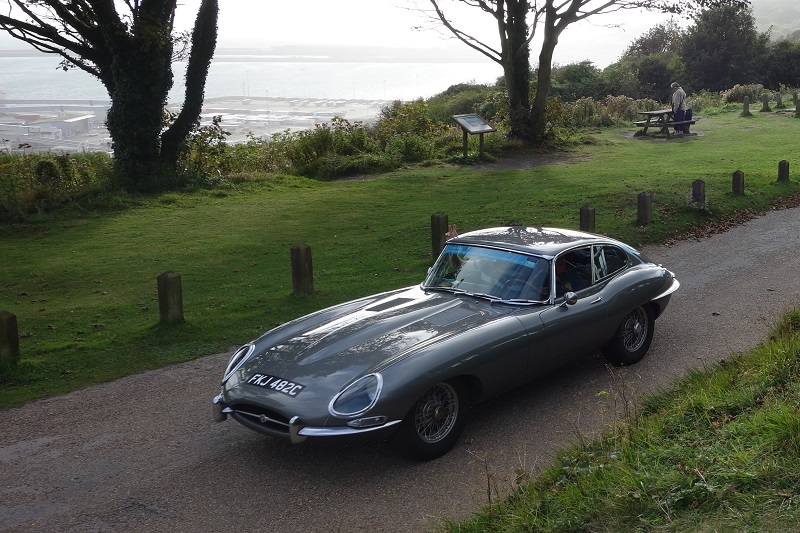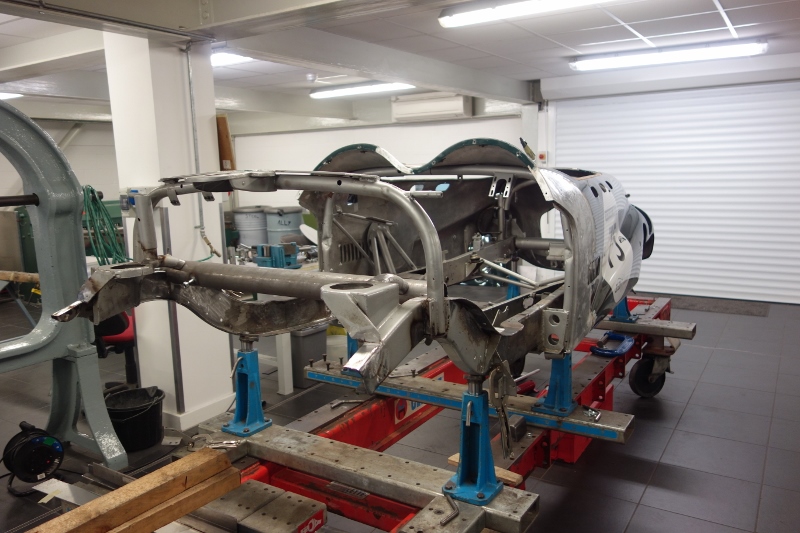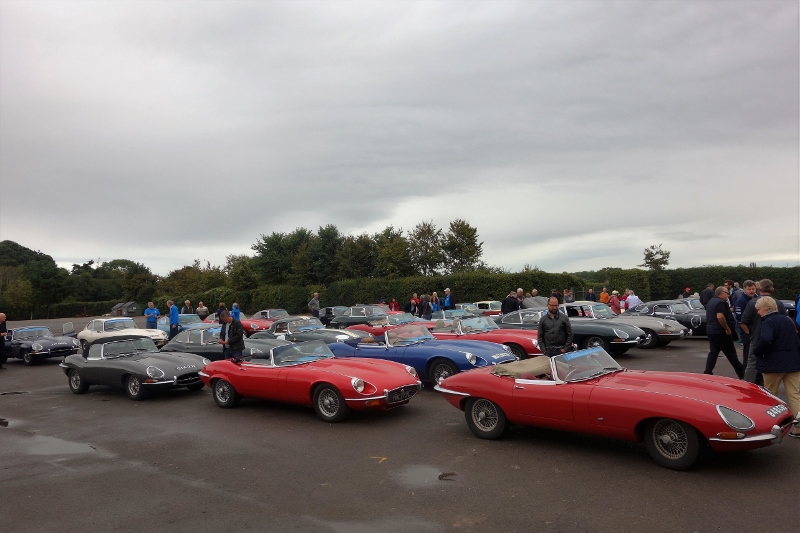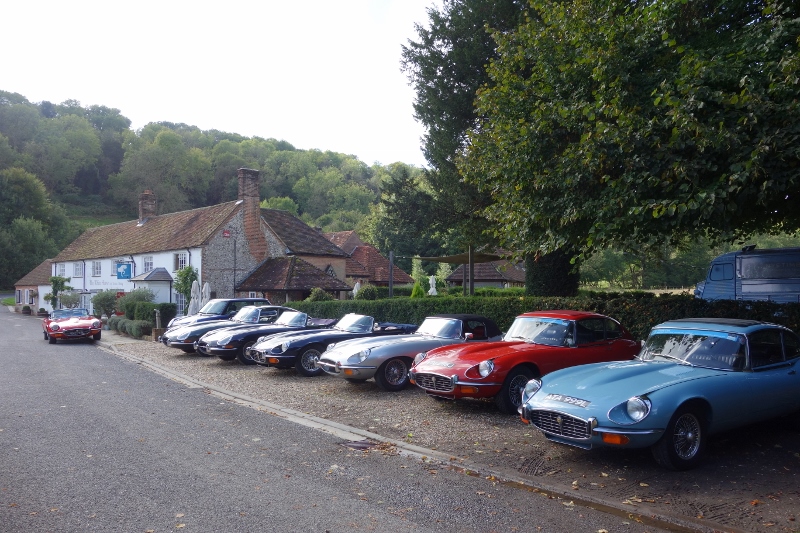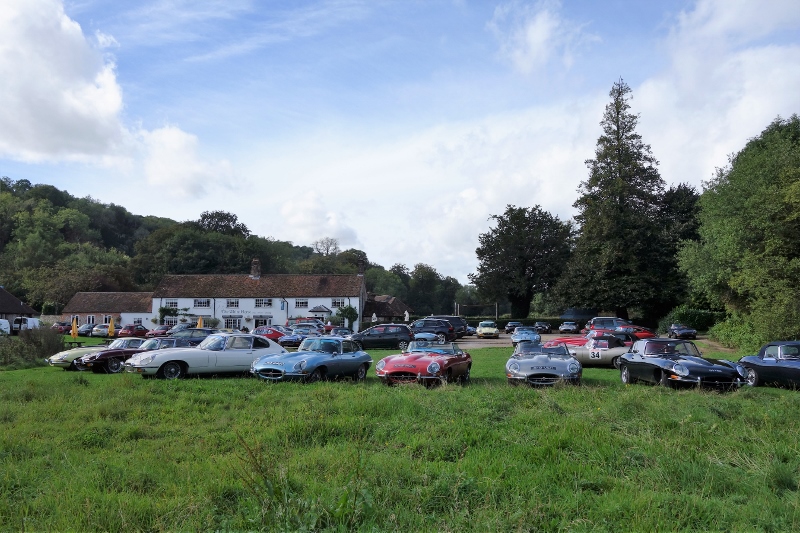Earlier in the year the E-Type Club had announced the inaugural Round Britain Coastal Drive in aid of Prostate Cancer UK. The 3,600 mile event making a clockwise tour around Britain, using the most coastal roads available. The route had been split into 18 daily stages starting from The Goodwood Estate and finishing, two and a half weeks later, back at Goodwood with a lap around the race circuit.
The aim was to get as many E-Types involved to make a visual impact along the route, with the flexibility of entering just single legs to the whole event. I had, rather unfairly, a perception that these types of events might be a little too cliquey and stuffy for my taste and so hadn’t taken much of an interest.
It was only after a chance meeting with a fellow owner, at a remote country pub tucked away on the Surrey/Hampshire boarder, that I was persuaded to reconsider. It was for a good cause after all. So I ended up registering for the first stage down to Lyme Regis, starting the day after the Revival meeting, and re-joining for the last two legs.
The starting leg would be the first prolonged test of my car, with the round trip covering around 450 miles in a day. Despite leaving plenty of time, the drive to Goodwood was fairly stressful due to numerous traffic problems and we only just managed to arrive 15 minutes before the planned start time.
| The Goodwood estate provided a perfect location for the start | Around 75 E-Types started, including a few Eagle E-Types | It was an impressive sight as everyone waited for the start |
|---|---|---|
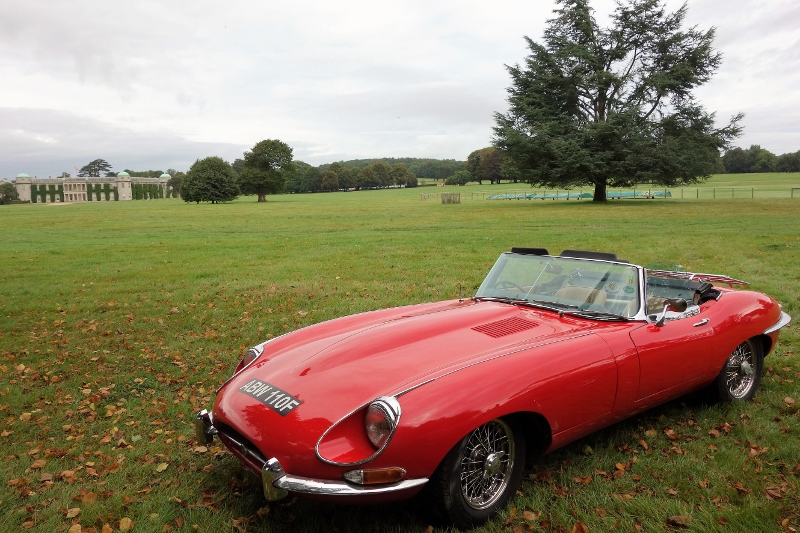 |
 |
 |
I must admit it was an impressive sight with around 75 E-Type amassed in the grounds of the Goodwood estate, headed by Philip Porter’s 848 CRY (of The Italian Job fame) and including a number of Eagle E-Types. Rather fittingly a Spitfire flew over Goodwood House as we set off up the hill climb.
The aim wasn’t to travel in convoy which was just as well. Within only a couple of miles after leaving Goodwood we were down to a group of about 10 cars and within 15 minutes down to five cars. The organisers had provided an official route to import into GPS devices but this was clearly interpreted differently depending on which make of Sat-Nav each owner used. So there appeared to be a somewhat random nature to the event as cars criss-crossed their way down to the coast.
The first stage from Goodwood to Lyme Regis
The tendency was simply to follow the lead car in the group rather than the Sat-Nav which did end up with one amusing detour. The lead car had missed the correct exit at a roundabout. Realising their mistake, they turned into a supermarket to get back on track … only to be followed by all the other E-Types following it.
The route only became interesting once we’d cleared the dull suburbs of Portsmouth and Southampton, reaching the New Forest and beyond. The Sandbanks chain ferry to cross Poole harbour provided an ideal opportunity for several cars to re-group and head to the picturesque Pig of the Beach in Studland for lunch. Our getaway was captured by some drone footage kindly taken and shared by Guy Cribb, another participant in the event ….
It was surprising how long the route had taken to the lunch stop. Partly due to the rather lethargic pace of the group of cars I was with and partly due to deviating from the official route on a number of occasions (read getting lost!).
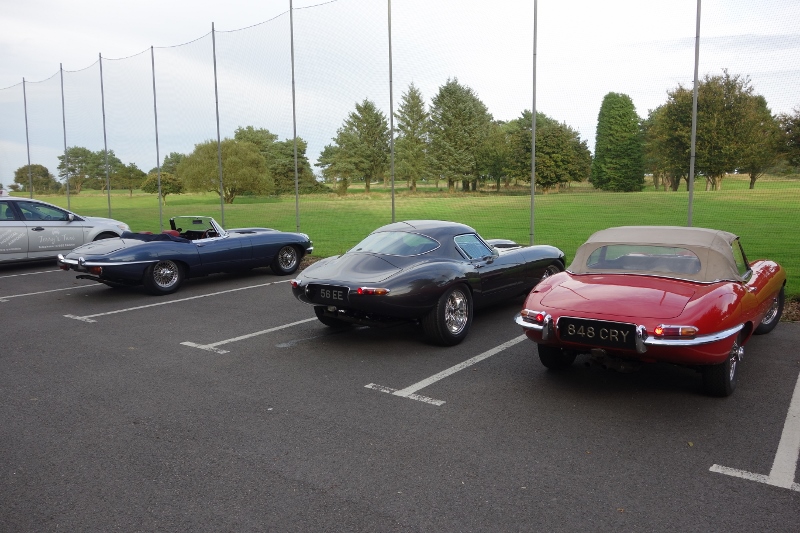
Parked at the finish, next to a
£700k Eagle E-Type and 848 CRY
So the latter part of the day became a spirited dash to the finish at Lyme Regis golf club, with superb views along the Jurassic Coast. The car behaved faultlessly apart from a slight hint of a dragging brake towards the end of the day.
The downside of only doing a single leg was that we then had to retrace our steps, turning the 180 mile leg into a 450 mile round trip. It was the first time I’d driven the car at night so I hadn’t got used to fumbling around the dash for the full beam switch.

A slight oil leak!
However it was only whilst preparing for the final two stages that I found I had a rather alarming oil leak. Leak? …. it was more of a stream!
I had only just changed the oil before the first stage but the oil level had already fallen to the very tip of the dipstick. It was quite disappointing as it hadn’t been dropping any oil until now but more importantly, if it wasn’t fixed, I wouldn’t be able to take part in the last stages of the event.
The oil was only leaking from the oil filter side but I couldn’t trace the problem. I had assumed it would be very easy to locate where the leak was coming from. All traces of oil were wiped clean and the car taken for a spin before returning to stand over a pit. There was no trace of any oil leak!
Yet when the car was started from cold, a trail of oil was laid on the road. I could even trace my route to the local petrol station several miles away by the oil trail left behind! It appeared that the leak was only occurring when it was cold. The garage’s view was to take part in the final legs but take a 5 litre can of oil, keep an eye on the oil pressure and check the oil level whenever we stopped.
The penultimate stage from Maldon to Folkestone
Two weeks later it was an early start to get to JD Classics in Maldon for the start of the penultimate leg down to Folkestone. JD’s showroom had some stunning cars but alas at even more stunning prices! It was however a fitting place to start, with plenty of their mechanics on hand for any final tweaks. Such as one owner had discovered fuel pouring from a leaking cork gasket from the top of the fuel tank.
| 848CRY covered the whole route | The RBCD event mascot …. obviously lost, as we often were! |
|---|---|
 |
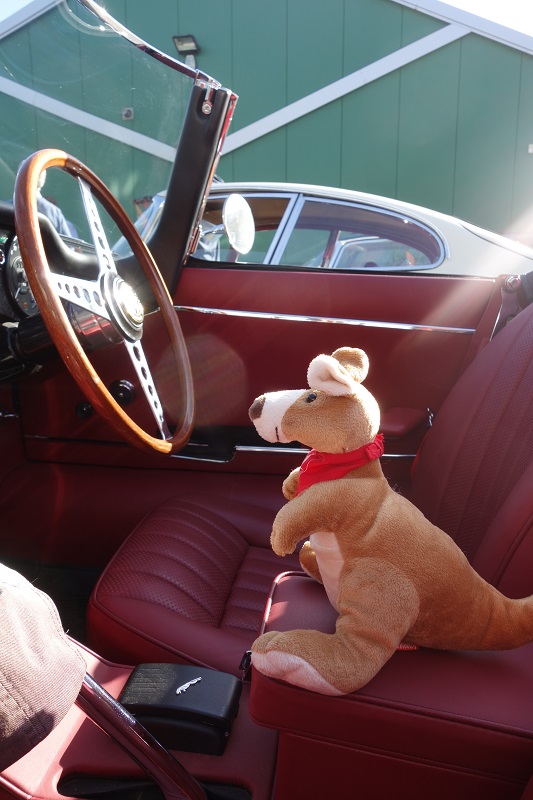 |
The drive down to Folkestone was pleasant enough but rather bland and the convoy of cars soon disintegrated into smaller groups. Although it was good to re-group at the white cliffs of Dover and, by chance, another Spitfire provide a fly past. I got the feeling the most picturesque stages were up the west coast of England and Wales and those in the Scottish Highlands.
| Gathering for an early start on the final leg from Folkestone to Goodwood | ||
|---|---|---|
 |
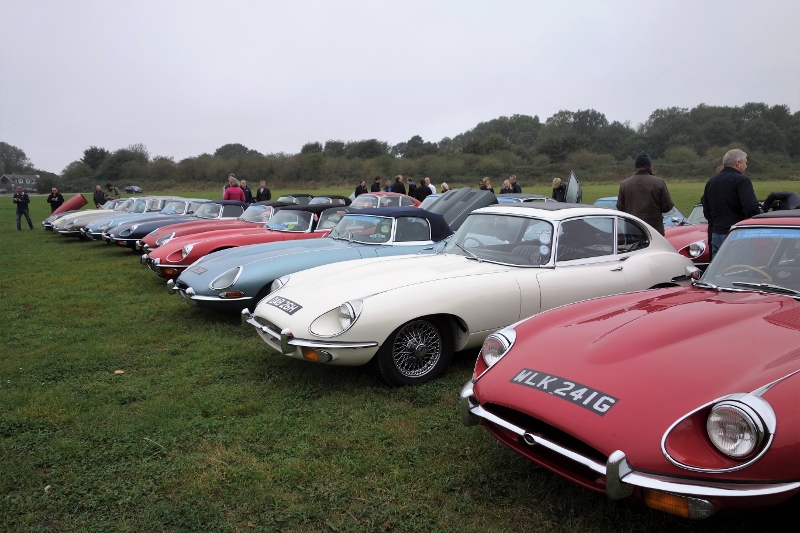 |
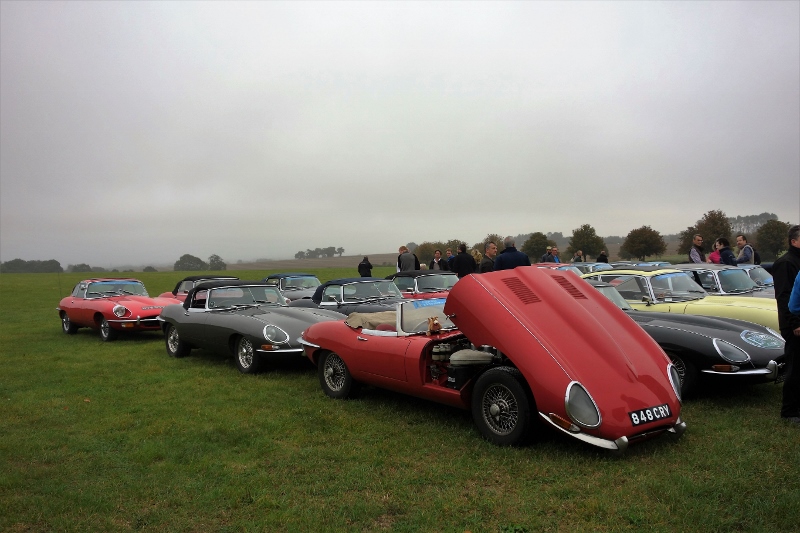 |
The final day was an early start and another spirited drive to allow time to visit to CKL in Battle to look at their historic racing operation and cars in their charge. It made JD Classics showroom look rather ordinary by comparison with 3 of the remaining 11 lightweight E-Types, a couple of D-Types, a Knobbly Lister, a Ford GT40 Mk3 and a few other racing Jaguars in their main workshop.
Over in the ‘shed’, as they termed it, were numerous other XK140s, XK150s, E-Types, an XKSS and a few Bentleys for good measure. I need to upgrade my shed! Whilst the space in the bodyshop was being shared between an Allard J2, being repaired after a huge crash at this year’s Le Mans Classic, and a split-screen VW campervan!
The organiser’s had asked people to arrive at the Goodwood circuit by midday for a planned media opportunity, where all 70-80 cars would make a tour of circuit during their ‘quiet’ hour. The result was the roads started to fill with E-Types as we closed in on the circuit. Fortunately the front bringing heavy rain in the morning had passed and the windscreen wipers were no longer needed. The event was rounded off by a meal at a nearby country pub making for an impressive car park.
It was the second time I’d driven the car in the rain and it’s not a pleasant experience. Terrifying at times! The wipers are worse than useless and visibility was only possible due to the application of copious amounts of Rain-X.
All in all it was a cracking event and the E-Type Club have plans to repeat the event in 2018. Next time I’m planning to do the entire route!


